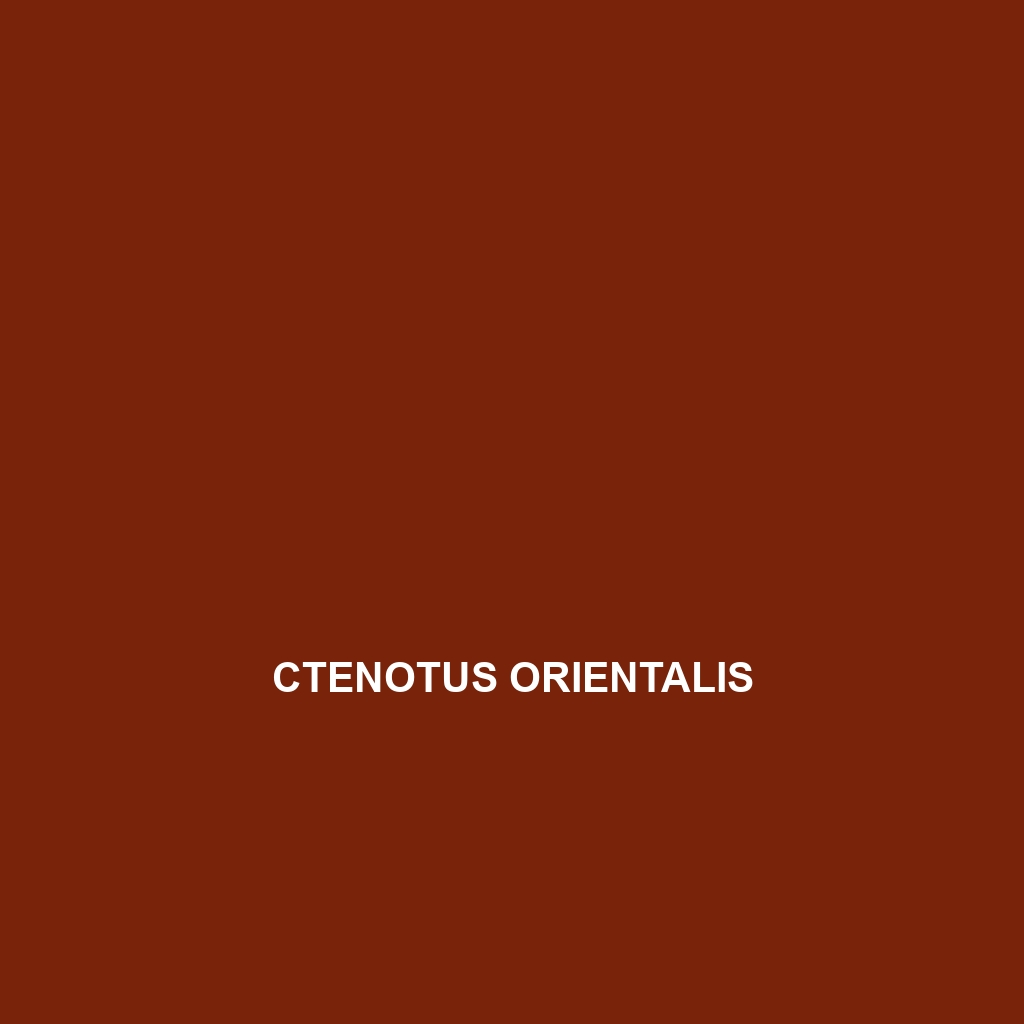Discover the Cubatyphlops arator, a small, non-venomous snake found in Central America's sandy and loamy soils, thriving in grasslands and forest edges. With its slender body measuring 30 to 50 centimeters and a diet of small invertebrates, it plays a vital role in maintaining soil health and biodiversity.
Tag: Habitat Destruction
Ctenotus serotinus
Discover the Ctenotus serotinus, or late-night skink, native to Australia's arid regions. This nocturnal insectivore reaches up to 15 cm in length, exhibiting a slender body with smooth, shiny scales and distinctive dark stripes, making it a fascinating addition to any reptile collection.</p>
Ctenotus ora
Discover the Ctenotus ora, an agile sand skink native to Australia's arid regions, characterized by its light brown to grey coloration, distinctive darker stripes, and insectivorous diet. This diurnal lizard plays a vital role in its ecosystem, controlling insect populations while serving as prey for various predators.
Ctenotus iapetus
The Ctenotus iapetus, or Iapetus skink, is a slender, 10 to 15 cm long lizard native to arid regions of southwestern Australia, characterized by its smooth, shiny scales and distinctive coloration. This diurnal insectivore plays a crucial role in its ecosystem by controlling insect populations and serves as prey for larger predators.</p>
Ctenotus fallens
Ctenotus fallens, a moderately sized skink native to southeastern Australia, thrives in open woodlands and grassy plains, exhibiting distinctive brown to gray coloration with lighter stripes. This diurnal species is agile, feeds primarily on insects, and plays a vital role in pest control while exhibiting unique social behaviors during mating.
Ctenotus euclae
Discover the Eucla Ctenotus (Ctenotus euclae), a medium-sized skink native to southwestern Australia, known for its effective camouflage, diurnal behavior, and diet of insects and small invertebrates. With a slender body averaging 10 to 15 cm in length, this resilient species plays a crucial role in its ecosystem by controlling pest populations.
Ctenotus ehmanni
Ctenotus ehmanni, or Ehmann's Ctenotus, is a medium-sized skink found in Australia’s arid and semiarid regions, characterized by its slender body, distinctive dark stripes, and diurnal behavior. This agile predator primarily feeds on insects and plays a vital role in maintaining ecological balance within its habitat.
Ctenotus essingtonii
Ctenotus essingtonii, commonly known as the Essington Skink, is a medium-sized lizard found in northern Australia's arid regions, characterized by its slender body, vibrant yellow or orange stripes, and diurnal behavior. This resilient species primarily feeds on insects and plays a critical role in its ecosystem as both predator and prey.
Ctenotus calurus
Discover the Yellow-Footed Ctenotus (Ctenotus calurus), a medium-sized Australian skink known for its distinctive yellow or orange feet and smooth, striped body. Found in arid habitats, this agile predator primarily feeds on insects and plays a critical role in maintaining ecological balance.
Ctenotus brooksi
Ctenotus brooksi, commonly known as Brook's Ctenotus, is a medium-sized skink native to arid regions of southern Australia, thriving in open woodlands and grasslands. This agile, insectivorous species showcases sandy-brown to greyish coloration with distinctive stripes, plays a crucial ecological role by controlling insect populations, and exhibits remarkable adaptability to varying environmental conditions.








